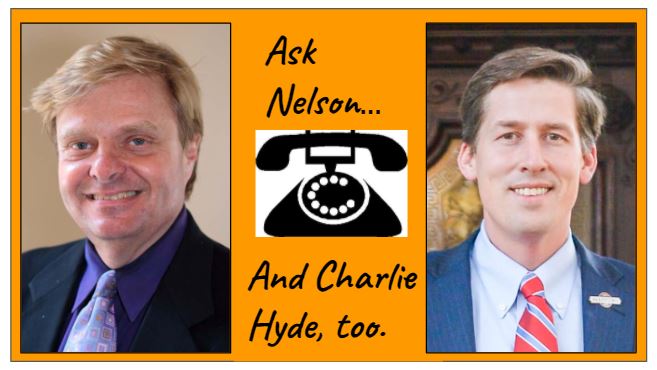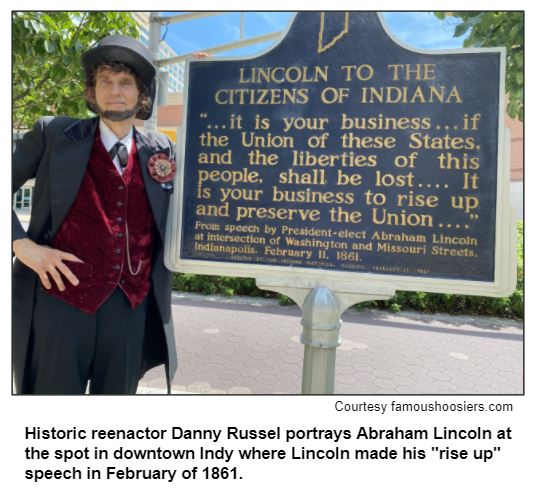Saturdays, noon to 1 p.m. ET on WICR 88.7 FM.
Or stream audio live from anywhere on WICR Online!
February 20, 2021
Ask Nelson and Charlie Hyde about Benjamin Harrison, the 1892 cholera epidemic and more
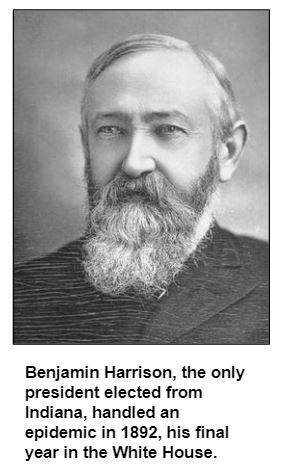
In between phone calls from listeners, Nelson and Charlie will interview each other about an array of topics, including how Benjamin Harrison, the only president elected from Indiana, handled an epidemic in 1892, his final year in the White House. Because of the Covid-19 pandemic, the 1892 cholera epidemic has been the focus of recent articles in the national press.
During our show, Charlie will explain how President Harrison responded when a ship from Hamburg, Germany, one of the epicenters of the epidemic, was en route to the United States. The cholera epidemic began in April 1892 in India and quickly spread to Europe, all while Harrison was dealing with a health crisis in his own family: First Lady Caroline Scott Harrison was gravely ill with tuberculosis and would die later in 1892 in the White House.
In between insights from Charlie and Nelson about this episode and others, listeners are invited to phone the WICR-FM (88.7) studio at 317-788-3314 and pose questions about any aspect of the state's history; typically on Hoosier History Live, questions from listeners are limited to the final 20 minutes of the show.
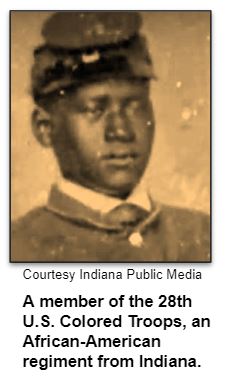
Benjamin Harrison (1833-1901), who became a brigadier general during the Civil War, initiated attempts during his subsequent political career to expand civil rights for African Americans; Charlie will describe these attempts during our show.
Charlie also will discuss the reaction in Indianapolis in 1888 when Harrison, a Republican, was nominated as a presidential candidate. It is the focus of a current exhibit at the presidential site titled The Night Indianapolis Roared.
Another topic during our show will relate to the recent dedication in Carmel of a sculpture and interactive kiosks in honor of Hoagy Carmichael (1899-1981). The famous composer, who grew up in Bloomington and Indianapolis, is profiled in Nelson's book Indiana Legends, 4th edition (Hawthorne Publishing, 2005). Nelson had several interviews with Hoagy's son, Randy Carmichael, who died in 2018; Randy had been a Hoosier History Live guest seven years earlier. The sculpture and kiosks honoring Hoagy are near the Center for the Performing Arts, which includes the Great American Songbook Foundation.
Roadtrip: Lincoln speech site in downtown Indianapolis
Guest Roadtripper and historic reenactor Danny Russel invites us to travel back in time 160 years to witness a moment in history that occurred on the corner of Washington and Missouri Streets in downtown Indianapolis.
Precisely at 5 pm on February 11th, 1861, and after a long secessionist winter, President Elect Abraham Lincoln made a stirring speech about the pitfalls that lay ahead for those seeking to preserve the Union. He made the stop while on his way to Washington D.C. to take office as our 16th president. The speech was met with deafening cheers and a 34-gun salute ordered by Governor Oliver P. Morton - a blast for every state in the nation.
Danny, who portrays Lincoln (and other famous Hoosiers) in schools and other educational settings, shares a few lines that the soon-to-be president spoke as he tried to convince his audience of the challenges that were coming:"Do the lovers of the Union contend that they will resist coercion or invasion of any state? If they do, then it occurs to me that the means for the preservation of the Union they so greatly love, in their own estimation, is of a very thin and airy character. If sick, they would consider the little pills too large to swallow. In their view, the Union would not be anything like a regular marriage at all, but only as a sort of free-love arrangement!"
Danny will share the Indianapolis crowd's reaction to president elect's speech - as well as details from his stay at the Bates House hotel and his breakfast the following morning with Governor Morton, which happened to fall on Lincoln's 52nd birthday - when he leads us on this Roadtrip back in time to a pivotal moment in the nation's history.
History Mystery
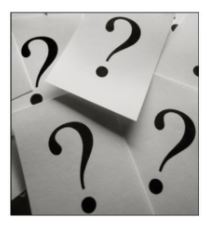
Question: Who was the shortest president in U.S. history?
Hint: He served in the White House before the Civil War.
The call-in number is (317) 788-3314. Please do not call in to the show until you hear Nelson pose the question on the air, and please do not try to win if you have won any other prize on WICR during the last two months. You must be willing to give your first name to our engineer, you must answer the question correctly on the air and you must be willing to give your mailing address to our engineer so we can mail the prize pack to you.
This weeks prizes are two tickets to the Eiteljorg Museum, courtesy of the Eiteljorg Museum, and two two tickets to Indy's Teeny Statue of Liberty Museum, courtesy of Tim and Julie's Another Fine Mess.
Hoosier History Live salutes broadcast journalist Jill Ditmire, 1964-2021
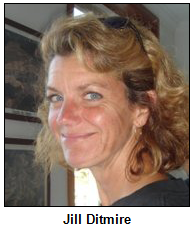 The recent death of veteran central Indiana journalist and arts and wine enthusiast Jill Ditmire saddens us all.
The recent death of veteran central Indiana journalist and arts and wine enthusiast Jill Ditmire saddens us all.
Jill called herself an "OmniMedia Specialist," and she shared her bubbly wit, talent, and knowledge pretty much everywhere: WFYI, WICR, Indianapolis Star and Village Sampler were just a few of the media outlets to which she lent her abundant expertise.
Jill was occasionally a part of the Hoosier History Live team as well, both as guest host and as co-host with Nelson Price on a 2013 show titled Wine Heritage in Indiana. Their guests were Richard Vine, a professor emeritus at Purdue University specializing in enology (that's the study and making of wine), along with Mark Easley of Easley Winery in downtown Indianapolis.
And if the Hoosier state seems like an odd place to specialize in wine, recall that America's first commercially successful winery was in Switzerland County in the small town of Vineyard, which now exists only on antiquated maps of southeastern Indiana.
Jill was also a regular talent on another Molly Head-produced show that aired on WICR. Too Many Cooks! was a food, cooking and wine show that featured Jill as a call-in wine reporter known by fans as the "Wine Maven." Other show talents included Patti Denton, Gary BraVard and Jo Ellen Meyers Sharp.
Her obituary and other information are available here.
Nelson Price, host and historian
Molly Head, producer/general manager, (317) 927-9101
Mick Armbruster, associate producer
Cheryl Lamb, administrative manager
Richard Sullivan, senior tech consultant
Pam Fraizer, graphic designer
Garry Chilluffo, consultant
Please tell our sponsors that you appreciate their support!

 For organizational sponsorship, which includes logos, links, and voiced credits in the show and in podcasts, email molly@hoosierhistorylive.org, or call (317) 927-9101 for information. Our podcast listens are increasing and we are being distributed on Indiana Memory and the National Digital Public Library. Grow with us as our podcast and internet presence expands! Thanks also to Visit Indy, Fraizer Designs, WICR-FM, Henri Pensis, Genesis Brown, Kielynn Tally, Heather McIntyre, Justin Clark, and many other individuals and organizations.
For organizational sponsorship, which includes logos, links, and voiced credits in the show and in podcasts, email molly@hoosierhistorylive.org, or call (317) 927-9101 for information. Our podcast listens are increasing and we are being distributed on Indiana Memory and the National Digital Public Library. Grow with us as our podcast and internet presence expands! Thanks also to Visit Indy, Fraizer Designs, WICR-FM, Henri Pensis, Genesis Brown, Kielynn Tally, Heather McIntyre, Justin Clark, and many other individuals and organizations.
Thank you!
We'd like to thank the following recent, new and renewal contributors whose donations help make this show possible!
- Tim and Meg Shelly
- Connor & Company, Inc.
- Georgia Cravey and Jim Lingenfelter
- Ann Frick
- Yetta Wolen
- In memory of William G. "Bill" Mihay
- Dr. William McNiece
- Michael Freeland and Sharon Butsch Freeland
- David E. and Lynne J. Steele
- Stacia Gorge
- Margaret Smith
- Rachel Perry
- Tom and Linda Castaldi
February 27, 2021 - coming up
Migration of African Americans during 20th century to Northern states
As Hoosier History Live salutes Black History Month, our focus will be on a massive movement of an estimated 6 million people during a span of nearly 60 years. Beginning during the World War I era, African Americans migrated in unprecedented numbers from the South to cities in Northern states, including Indiana.
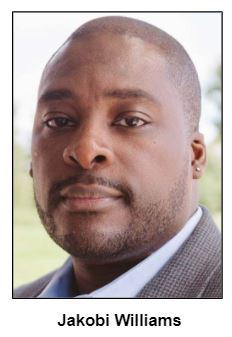
Some historians use the term Great Migration to apply to the entire span. Others refer to the era from the 1910s to 1940 as the First Great Migration, and describe the 1940s to 1970 movement as the Second Great Migration.
To explore a range of factors and ramifications associated with this consequential migration, Nelson will be joined by Jakobi Williams, Ruth N. Halls Professor in the Department of African American and African Diasporas Studies and the Department of History at Indiana University.
Jakobi, who was born and grew up on the south side of Chicago, will discuss ways that state and local governments in the South attempted to restrict African Americans from leaving. He also will describe the challenges that confronted them in Northern cities after they resettled.
Since the early 1970s, demographers have documented a "reverse migration" among the U.S. Black population. As USA Today explained in a 2015 analysis, in recent years more African Americans have moved to the South than left it, returning to metro areas such as Atlanta and Charlotte.
Our guest Jakobi Williams, the author of From the Bullet to the Ballot (University of North Carolina Press, 2013) , suggests the PBS series Eyes on the Prize as a resource for those who want to learn more about the Great Migration.
Copyright 2021
|

